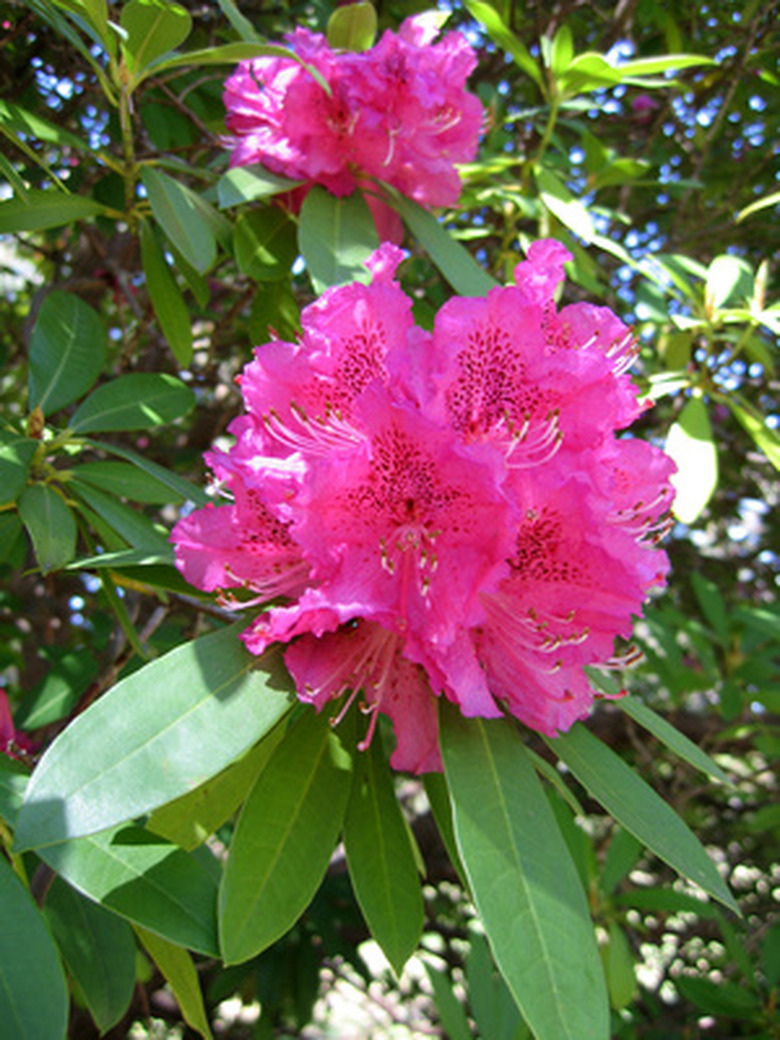Brown Spots On A Rhododendron
When it comes to incorporating large, full-bodied flowering shrubs for privacy and delineation of spaces in a landscape, one popular choice is the rhododendron. Landscape designers and home gardeners plant rhododendrons in hedge arrangements or as stand-alone specimens for the splashes of color that their spring flowers and dark green foliage add to their landscapes. These flowering beauties belong to the Ericaceae, heath, family and are sometimes affected with brown spots on their leaves. Knowing what causes brown spots and understanding how to prevent and treat them may save your rhododendrons from irreversible damage.
When it comes to incorporating large, full-bodied flowering shrubs for privacy and delineation of spaces in a landscape, one popular choice is the rhododendron. Landscape designers and home gardeners plant rhododendrons in hedge arrangements or as stand-alone specimens for the splashes of color that their spring flowers and dark green foliage add to their landscapes. These flowering beauties belong to the Ericaceae, heath, family and are sometimes affected with brown spots on their leaves. Knowing what causes brown spots and understanding how to prevent and treat them may save your rhododendrons from irreversible damage.
Fungal Causes
Fungi from the Phytophthora, Cercospora, Colletotrichum, Pestalotiopsis and other genera are known to cause brown spots on the leaves of rhododendrons. Infection usually occurs in the springtime, but may not be fully manifested until the winter or the next spring.
Phytophthora Dieback Disease
Brown spots on rhododendrons are commonly caused by the Phytophthora dieback fungus genus, which has several species that affect the foliage of rhododendron plants. These fungi attack the shrub's new growth, its leaves and stems. The infected parts are invaded with brown spots that expand and spread from the leaves and to the stems to infect the established rhododendron leaves. As stated by R.K Jones and D.M. Benson, plant pathologists at North Carolina State University, infected leaves will have a "water-soaked" appearance; then they will become dried out and fall off of the shrub.
- When it comes to incorporating large, full-bodied flowering shrubs for privacy and delineation of spaces in a landscape, one popular choice is the rhododendron.
- The infected parts are invaded with brown spots that expand and spread from the leaves and to the stems to infect the established rhododendron leaves.
Environmental Causes
Brown spots on rhododendron leaves may not be a sign of disease. Rhododendrons can be affected by a condition called "physiological leaf spot." This condition is caused by poor root health, improper irrigation as in over- or under-watering, drought and extreme heat exposure.
Management
At the first sign of brown spots, whether caused by an infection or a physiological problem, remove the affected leaves before the spots spread beyond the initial sites to the rest of the plant. Properly dispose of the infected plant parts far away from rhododendron shrub. Do not let the leaves fall to the ground to infect the soil. Apply fungicides specifically formulated for brown spots on rhododendrons to help kill the fungus and prevent its spread.
- Brown spots on rhododendron leaves may not be a sign of disease.
- Properly dispose of the infected plant parts far away from rhododendron shrub.
Prevention
Promoting healthy growth of your rhododendrons may prevent brown spot infections. This includes balancing the soil condition at the proper pH range and adding fertilizers, mulch and adequate watering. Plant your rhododendrons in a location where they receive good sunlight. Prune your rhododendrons in the fall or late winter/early spring before the flowers bloom to promote adequate air circulation through the shrubs to keep their leaves and flowers dry and aerated, according to Daniel H. Gillman, plant pathologist of the University of Massachusetts Extension landscape, nursery and urban forestry program.
